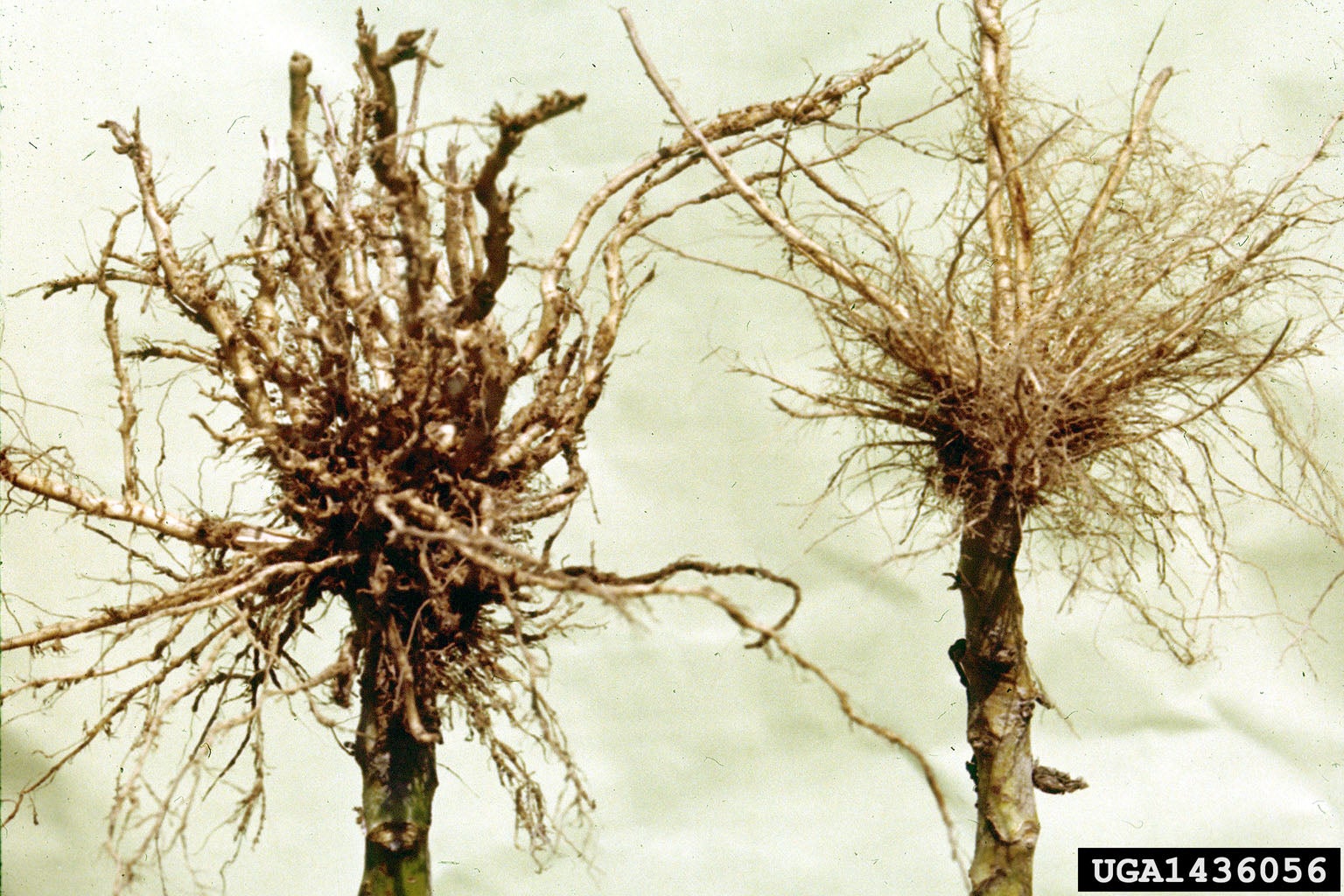Are All Nematodes Bad – A Guide To Harmful Nematodes


The nematode group of organisms is the largest of all animals, with thousands of different species. One square foot of soil in your garden probably has one million of these tiny worms. As a gardener, it is important to know which nematodes are bad for plants and cause damage. Most are not only harmless but actually helpful for overall soil, ecosystem, and plant health.
Are All Nematodes Bad?
Nematodes are microscopic, but multicellular, non-segmented round worms (earthworms are segmented, for comparison). If critters creep you out, don’t worry. You can’t see the millions of nematodes in your soil without magnification. Luckily for gardeners, of the approximately 80,000 species of nematodes, only about 2,500 are parasitic. Of those, only some are parasitic and damaging to crop plants.
So, no, not all are harmful nematodes, and most are normal members of the soil ecosystem. In fact, many of the nematodes in your garden soil are beneficial to your garden. They eat some harmful species of bacteria, fungi, and even the larvae of insects.
What are the Bad Nematodes?
Gardeners should be aware of some of the more detrimental nematodes that may be lurking in the soil, however, doing damage to roots and destroying plants. Here are some of the more common plant parasitic nematodes you may come up against:
- Root knot nematode. This is a big one for vegetable gardens, orchards, and ornamental beds. The name describes the main symptom of an infestation, which is the growth of bumps or galls on host roots. Attacked plants become stunted as root knot nematodes prevent them from getting adequate nutrients.
- Root lesion nematodes. If you grow fruit trees, watch out for signs of these worms. Root lesion nematodes suck on roots and burrow through the tissue. The affected roots of trees often develop fungal infections as well.
- Dagger nematodes. These impact fruit trees and perennial beds. They stick a stylet like a needle into plant roots to feed. Dagger nematodes cause harm mainly as vectors of viral infections, including tomato ringspot and cherry rasp leaf viruses.
- Ring and spiral nematodes. These nematodes cause limited damage in garden beds, but may impact fruit trees. They are abundant in turf grasses, though, and can cause dead, yellow patches.
If you see signs of stunting, loss of vigor, reduced yield, or unusual growths or damage on roots, consider that you may have a pest nematode infestation. Contact your local extension to get more information about what kind may be an issue in your area and what control measures are recommended.
Gardening tips, videos, info and more delivered right to your inbox!
Sign up for the Gardening Know How newsletter today and receive a free copy of our e-book "How to Grow Delicious Tomatoes".

Mary Ellen Ellis has been gardening for over 20 years. With degrees in Chemistry and Biology, Mary Ellen's specialties are flowers, native plants, and herbs.
-
 12 Lush Alternatives To A Lawn For Sustainable Spaces
12 Lush Alternatives To A Lawn For Sustainable SpacesAlternatives to a lawn are beautiful and also beneficial to your local ecosystem and its pollinators. Explore our top picks for plants to replace grass.
By Tonya Barnett
-
 Types Of Tomatoes Explained: Explore The Many Wonderful Shapes, Colors, Flavors, & Best Uses
Types Of Tomatoes Explained: Explore The Many Wonderful Shapes, Colors, Flavors, & Best UsesThe world of tomato varieties is vast and fascinating. Learn about the key types to grow in your garden, tailored to your preferences and space.
By Amy Grant